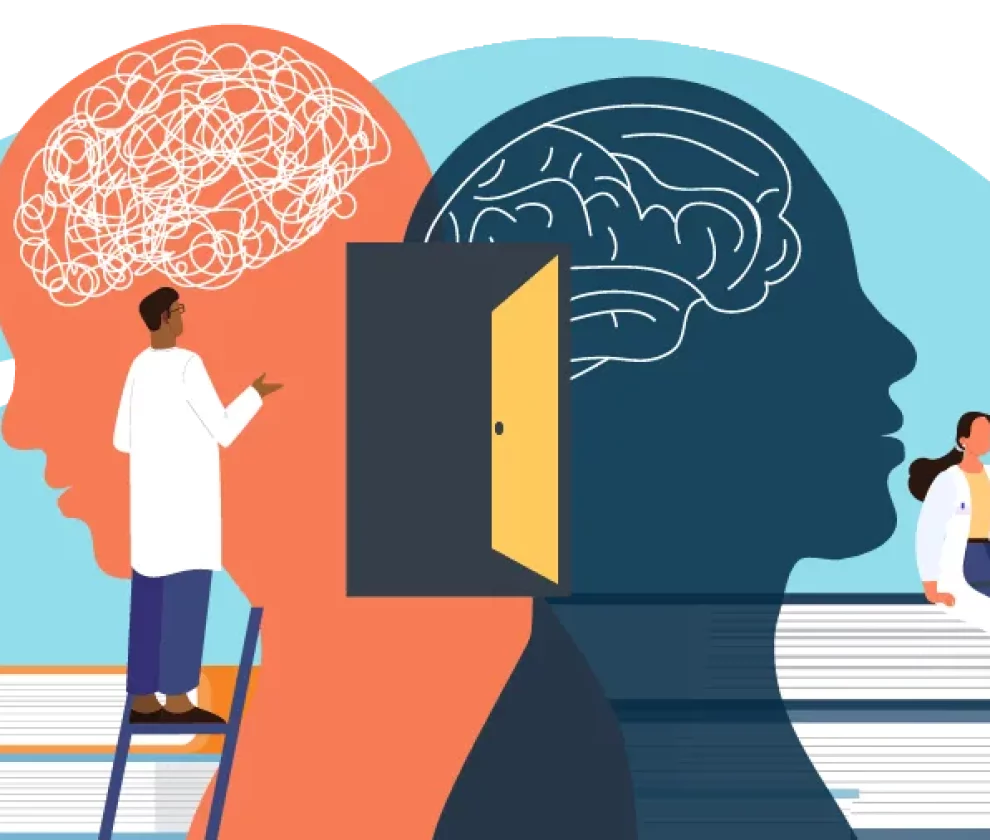If you’ve ever felt your heart pounding, your chest tightening, and an overwhelming sense of fear washing over you, you might have experienced a panic attack. But when these episodes are tied to past trauma, they can feel even more intense. PTSD panic attacks can seem like they come out of nowhere, leaving you feeling helpless and overwhelmed.
The good news? You’re not alone, and there are ways to manage them. In this guide, we’ll explore what PTSD panic attacks are, why they happen, and, most importantly, how you can regain control when they strike.
What is a PTSD Panic Attack?
A PTSD panic attack happens when the body’s fight-or-flight response is triggered by past trauma. Unlike general panic attacks, which may not always have an identifiable cause, PTSD-related panic attacks are often linked to specific memories, emotions, or physical sensations.
How PTSD Can Trigger Panic Attacks
Post-Traumatic Stress Disorder (PTSD) develops after experiencing or witnessing a traumatic event. For some, this trauma lingers in the body and mind, making them highly sensitive to perceived threats. When something reminds them of their trauma—even subtly—the brain misinterprets the situation as dangerous, triggering a panic attack.
PTSD Flashbacks vs. Panic Attacks
While panic attacks cause overwhelming fear and physical distress, PTSD flashbacks make a person feel as if they are reliving the trauma. Sometimes, these two overlap, making it difficult to distinguish between them. However, the key difference is that a flashback pulls you into the past, while a PTSD panic attack is an intense reaction to a present trigger.
Symptoms of PTSD Panic Attacks
A PTSD panic attack doesn’t just affect the mind—it impacts the entire body. Symptoms can be intense and feel like a life-threatening emergency, even though they aren’t physically harmful.
Physically, a PTSD panic attack can cause a rapid heartbeat, chest tightness, shortness of breath, dizziness, trembling, sweating, and nausea. Many people describe the sensation as feeling like they’re choking or struggling to get enough air, which only adds to the fear and panic.
Psychologically, the experience can be just as overwhelming. Extreme fear and a sense of impending doom take over, often accompanied by dissociation, making a person feel detached from reality. Racing thoughts and difficulty concentrating can make it hard to ground yourself in the present moment.
Behavioral symptoms tend to follow, as many people begin avoiding places or situations that might trigger an attack. Social withdrawal becomes common, and the fear of future panic episodes can make it difficult to engage in daily life. After an attack, it’s not unusual to feel completely drained, both physically and emotionally, as the body recovers from the intense stress response.
Common Triggers of PTSD Panic Attacks
PTSD panic attacks don’t happen randomly—there’s usually a trigger behind them. Identifying what sets them off can be a crucial step in managing them.
Trauma Reminders (Sounds, Smells, Places)
Certain environments, people, or even specific scents can bring back traumatic memories, sending the body into panic mode. For example, someone who experienced a car accident might have a PTSD panic attack when they hear screeching tires.
Emotional Stressors and Anxiety Spikes
PTSD increases overall anxiety levels, making individuals more sensitive to stress. Arguments, high-pressure situations, or overwhelming emotions can push the nervous system into overdrive, leading to a PTSD panic attack.
Sleep Disturbances and Hypervigilance
Many with PTSD struggle with nightmares, insomnia, and hypervigilance (a state of being constantly on edge). A lack of sleep can weaken emotional regulation, making panic attacks more likely.
Coping Strategies for PTSD Panic Attacks
When a PTSD panic attack hits, it can feel impossible to control. But with the right techniques, you can lessen their impact and regain a sense of safety.
Grounding Techniques (5-4-3-2-1 Method, Deep Breathing)
Grounding helps bring you back to the present moment. The 5-4-3-2-1 technique is a simple but powerful way to refocus:
- 5 things you can see
- 4 things you can touch
- 3 things you can hear
- 2 things you can smell
- 1 thing you can taste
Pair this with deep breathing exercises, like box breathing (inhale for 4 seconds, hold for 4, exhale for 4, hold for 4), to calm your nervous system.
Therapy Approaches: CBT and DBT for Panic and PTSD
Cognitive Behavioral Therapy (CBT) helps you recognize and challenge negative thought patterns that fuel PTSD panic attacks. Dialectical Behavioral Therapy (DBT) adds distress tolerance skills, making it easier to navigate overwhelming emotions.
Medication and Psychiatric Support Options
For some, therapy alone isn’t enough. Medication, such as SSRIs (Selective Serotonin Reuptake Inhibitors) or anti-anxiety prescriptions, can help regulate the nervous system and reduce the frequency of PTSD panic attacks.
How PTSD Panic Attacks Impact Daily Life
Left untreated, PTSD panic attacks can interfere with every aspect of life, making even simple tasks feel impossible.
- Workplace Challenges – Difficulty focusing, calling in sick frequently, avoiding high-stress situations.
- Relationship Struggles – Difficulty trusting others, withdrawing emotionally, or becoming overly dependent on loved ones for reassurance.
- Social Isolation – Fear of having a PTSD panic attack in public can make social situations overwhelming.
- Physical Health Effects – Chronic stress can lead to headaches, digestive issues, and weakened immune function.
How Novu Wellness Can Help
At Novu Wellness, we specialize in treating PTSD, anxiety, and panic disorders through evidence-based, trauma-informed care. Our Partial Hospitalization Program (PHP) and Intensive Outpatient Program (IOP) provide structured support while allowing clients to maintain their daily lives.
PHP and IOP Programs for PTSD and Anxiety
Our programs offer intensive therapy for those struggling with PTSD and panic attacks, helping individuals build long-term coping strategies.
Evidence-Based Therapies: CBT, DBT, and Holistic Approaches
From traditional therapy methods to mindfulness and holistic healing, we create a personalized treatment plan that fits your needs.
Personalized Treatment Plans for Long-Term Recovery
There’s no one-size-fits-all solution for PTSD. Our expert clinicians work with you to design a plan that ensures sustainable healing.
When to Seek Professional Help
If PTSD panic attacks are interfering with your ability to function, it may be time to seek professional support.
Signs That Panic Attacks Are Disrupting Daily Life
- Avoiding necessary activities out of fear
- Frequent panic attacks that feel uncontrollable
- Using substances to cope with panic symptoms
Benefits of Structured Mental Health Treatment
Professional guidance helps individuals manage PTSD panic attacks with effective coping strategies. A supportive community provides understanding and reduces isolation. With the right tools, regaining control over daily life becomes possible.
Hope for The Future
PTSD panic attacks can be overwhelming, but they don’t have to control your life. With the right support, coping strategies, and professional treatment, you can find relief and start living on your terms again.
If you or someone you love is struggling, Novu Wellness is here to help. Reach out today to learn more about our PTSD treatment programs and take the first step toward healing.




